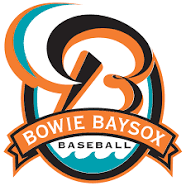

This is possible because many values have an acceptable margin of error, allowing varying levels of precision in the calculations. Even within a single video encoder there will usually be options to trade encoding speed for accuracy.

Lossy encoding is basically a series of estimations and approximations. The codecs are the actual implementation, which my include all or just some of the complete feature set. MPEG-4 Part 10 is a standard that codecs are written to. Codecs Just because all MPEG-4 AVC encoders are designed to the same standard doesn't mean they're all the same. Other features, like higher resolutions and bitrates, aren't even helpful for many devices. Some of the more advanced features require a fair amount of CPU power, and therefore aren't suitable for devices like 3G phones or many portable media players. Like MPEG-2 and MPEG-4 Part 2 video, AVC is divided into a number of profiles, primarily to define what features a particular device or class of devices (like 3G phones for example) supports. Advanced Video Coding MPEG-4 Part 10 defines video encoding that's equally useful for low resolution/bitrate players like mobile phones and media players, medium resolutions and bitrates comparable to Standard Definition (SD) DVD, to high definition movie encoding for HDTV, Blu-ray, and HD DVD. Both are valid, and refer to the same standard.

Since the ITU designation for the standard is H.264, you may see MPEG-4 Part 10 video referred to as either AVC or H.264. While MPEG-4 Part 10 is a ISO/IEC standard, it was developed in cooperation with the ITU, an organization heavily involved in broadcast television standards. AVC / H.264 MPEG-4 Part 10, also known as MPEG-4 AVC (Advanced Video Coding), is actually defined in an identical pair of standards maintained by different organizations, together known as the Joint Video Team (JVT). It also includes specifications for lower quality video for portable devices, allowing a single standard to be compatible across a wide variety of devices and applications. MPEG-4 Part 10 was designed specifically with High Definition (HD) video for home theater applications in mind as one potential application. MPEG-4 Part 2 (ASP and SP), which includes implementations like DivX and XviD, was originally designed with video conferencing and other relatively primitive types of video. MPEG-4 Part 10 is a standard for video Compression.


 0 kommentar(er)
0 kommentar(er)
